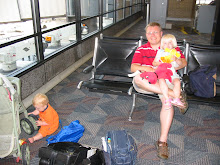Bertonian Battles
25mm Napoleonics
Dice-less Card Version
25mm Napoleonics
Dice-less Card Version
Preamble…
Ideas…
This game is designed to be quick, fun, and a little bit historical. It is not a simulation. However, it is also not just a game. In order to make things quick, the game has been made with cards. The cards are for four things.
A. Combat -- the cards tell how many people die in combat.
B. Activation -- the cards tell how many units can move in a player’s turn.
C. Morale -- the cards replace morale rolls.
D. Initiative -- the cards decide who moves first each turn.
Game sequence…
The draw…
Each player draws six cards to use for activation and initiative. Each “draw” represents about 30 minutes of real time, therefore each activation sequence represents about 10 minutes. Although it is not critical that we are perfectly right about the time-scale.
Initiative Phase…
Each player lays down one card to serve as his “initiative roll” the cards are revealed at the same time. The player with the highest card decides who goes first. If it is a tie, the player that did not have initiative last time gets to decide who goes first. If the first “initiative roll” is a tie, each player draws one card until there is no tie, and then that player that wins the draw gets to decide who moves first.
Activation…
The first player then plays one card face up from his hand to activate a number of his units. Activation numbers range from 1 to 5, with 3 being fairly common. The player may move these units in any way he or she desires, with the following strictures…
Changing Formation…
As its activation, a unit may normally change formation. There are three formations. Column, Line, and Square. The advantages of each will be discussed later under “Firing” and “Melee”
Movement…
Normal Infantry may move 6 inches while in column, 4 inches in line, and 1 inch in square formation. In order to turn, units change their facing and then move. All movement is forward. When units change their facing more that 45 degrees, units may not move.
Obstructions…
Various obstacles are all over the battlefield. These include fences, woods, hills, and the like. Each troop has a “cohesion” number. When trying to enter or pass one of these obstacles, one must draw a card under one’s “cohesion” number. This is the only way that movement is restricted besides the formation idea.
Skirmish Formation…
Some units do not have a particular formation that they use. They are completely free form. These are the skirmish units. They always move 8 inches and also generally have higher cohesion numbers. They do not have to pay any penalty for changing their facing more than 45 degrees.
Firing…
All ranged firing in this game is passive. That is, it is done by the non-phasing player. When a unit is within range of another unit, the non-phasing player can “fire” on that unit by drawing a card and seeing how many people die in that unit. When a player is moving one of his or her activated units, the non-phasing player can say “Stop!” and then fire on the moving unit. Firing is based on a 45 degree arc. You cannot hit anything outside of a 45 degree arc. Only those men on the front rank may fire. When firing, the non-circled number is the number of casualties.
Morale…
When units take casualties, a morale draw must be made. Normally, a units morale level is equal to the number of troops that unit possesses. However, certain situations make morale more or less. The key is to draw a card at or under your morale. If you draw a card higher than your morale, then the unit must rout, moving 12 inches to the rear. There it can rally by drawing under the morale.
Assaulting…
When units get within 2 inches of an enemy unit, an assault takes place. This is the only case when a moving player draws cards to cause casualties on an enemy. Each unit draws a card to inflict on the enemy. The circled number is the number of casualties inflicted this time. After losing men, both units must make a morale draw.
Special Characteristics…
A unit’s special characteristics are many and varied. They have to do with anything from the amount of training a unit has, its loyalty, its equipment, and the like.
One of the most obvious special effects is the weaponry a unit carries.
Long Range Short Range
Musket 10in 5in
Rifle 16in 8in
Carbine 8in 4in
Pistol 6in 3in
Some units should be able to hit at longer ranges. Therefore, add an inch or two to the range of these regiments.
Other characteristics have to do with morale. Some units have good morale, others are average, and some are poor.
Conscripts = -2 morale
Militia = -1 morale
Regulars = +/-0 morale
Veterans = +1 morale
Elite = +2 morale
Also, morale has something to do with the formation the troops are in at the time.
Line = -1 morale
Column = +/-0 morale
Square = +1 morale
Column = +/-0 morale
Square = +1 morale
One of the characteristics spoken of previously is that of cohesion. Cohesion depends on training.
Conscripts = 6
Militia = 7
Regulars = 8
Veterans = 9
Elite = 10
Militia = 7
Regulars = 8
Veterans = 9
Elite = 10
Skirmish units add 2 to cohesion, as it is typically easier for them to move through rough terrain.

No comments:
Post a Comment